Vietnamese villages, especially the traditional ones in the North, have always been an endless source of inspiration for those seeking their cultural roots. Here, time seems to slow down, preserving cultural values, unique architecture, and long-standing historical stories. Exploring these ancient villages is not just a tourist journey, but also an opportunity to deeply understand the cultural identity and people of Vietnam.
Cuu Village (Phu Xuyen, Hanoi): Witness to History
Located about 40km south of Hanoi’s city center, Cuu village in Phu Xuyen district is a hidden gem in the heart of the capital. This over 500-year-old village is famous for its villas bearing the strong imprint of ancient French architecture harmoniously combined with Vietnamese traditions. Strolling along the narrow alleys, you will feel the unique intersection of two cultures, between the past and the present.
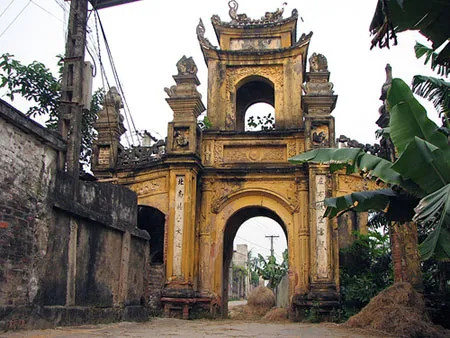
The ancient houses with unique architecture are the highlights of Cuu village. Many buildings still retain their original beauty from the French colonial period, giving visitors the feeling of stepping into a historical film. Cuu village is not only a tourist destination but also a living museum of architecture and culture.
Duong Lam Ancient Village (Son Tay, Hanoi): Mossy Beauty
Dubbed one of the oldest villages in the North, Duong Lam village in Son Tay town, Hanoi, attracts visitors with its rustic, simple, and traditional beauty. The green of trees blends with the dark brown of ancient houses, creating a peaceful and tranquil space, making anyone who sets foot here feel relaxed and comfortable.
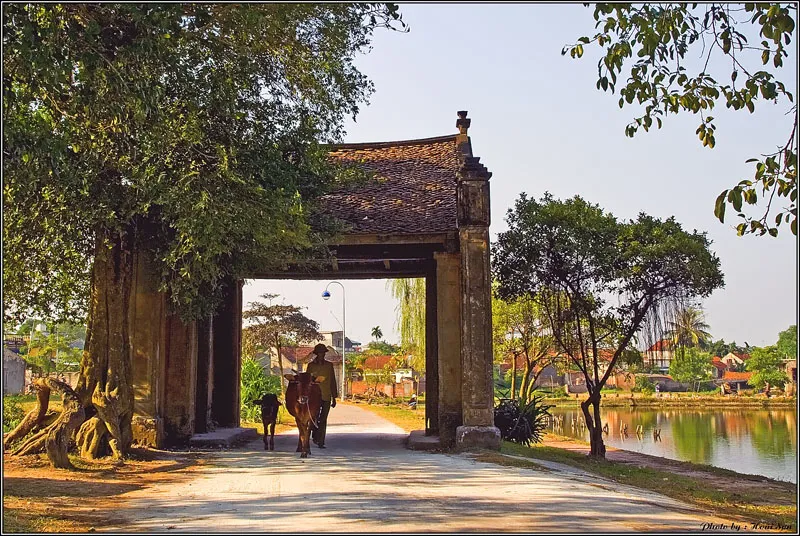
A special feature of Duong Lam is the houses built entirely of laterite, a characteristic material of the region. The mossy laterite walls bear the imprint of time, creating an ancient and unique beauty for the village. In addition, visitors can also visit historical sites such as Phung Hung Temple, Ngo Quyen Mausoleum, and explore the traditional customs of the local people. Combining a visit to Duong Lam ancient village with Son Tay Ancient Citadel, Va Temple, or Mang Son Temple will help you have a complete journey to explore the traditional land of Son Tay.
Bat Trang Pottery Village (Gia Lam, Hanoi): Where Quintessence Converges
Located on the left bank of the Red River, Bat Trang pottery village in Gia Lam district, Hanoi, is one of the most famous traditional craft villages in Vietnam. With a history of over 500 years, Bat Trang is the birthplace of exquisite and unique ceramic products, imbued with Vietnamese cultural identity.
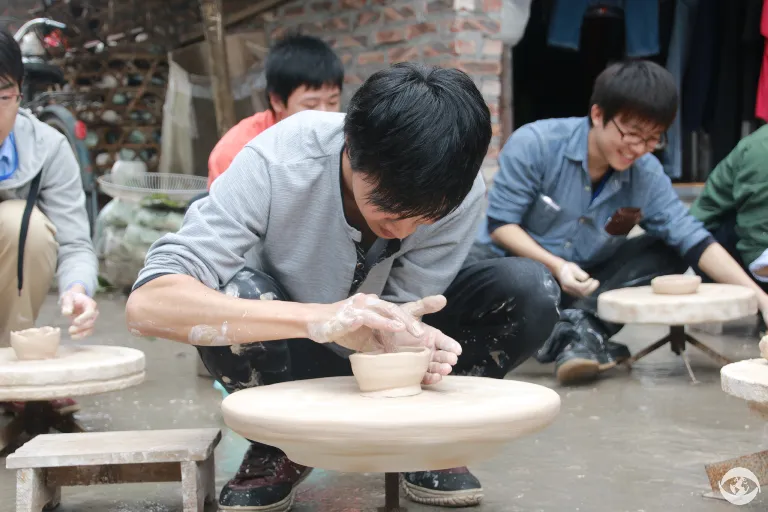
Coming to Bat Trang, visitors not only admire the beautiful ceramic products but also have the opportunity to experience the traditional handmade pottery making process. You can create your own unique ceramic products and take them home as souvenirs. Besides, don’t forget to enjoy local specialties such as “bánh tẻ” (young rice cake), “bánh sắn” (cassava cake), Dong Du guava, etc.
Uoc Le Village (Thanh Oai, Hanoi): Traditional Flavors
Uoc Le village, located in Tan Uoc commune, Thanh Oai district, Hanoi, is famous for its traditional sausage making craft. However, what impresses visitors most when coming to this ancient village is its unique architecture, bearing the imprint of time.
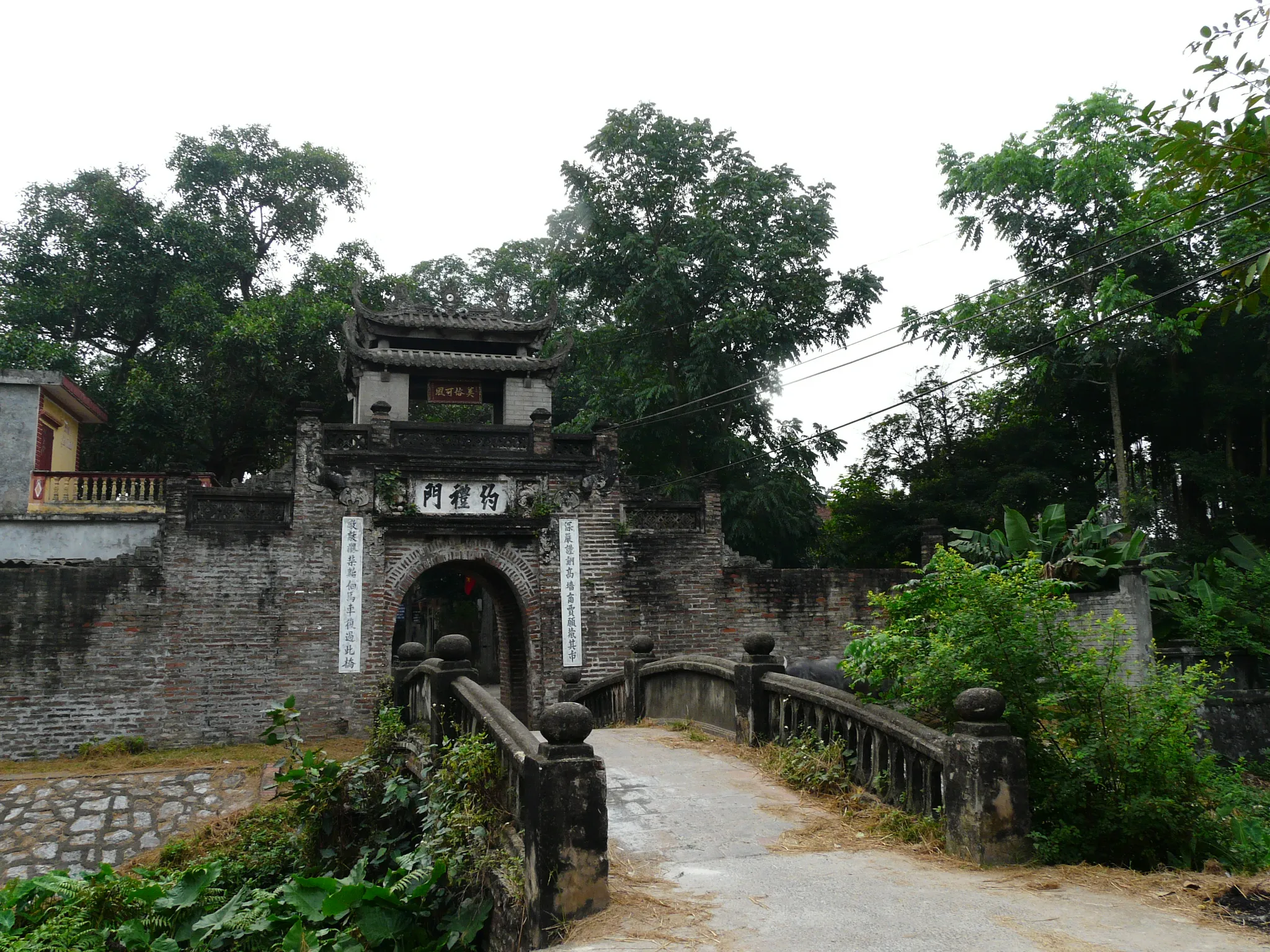
The gate of Uoc Le village is a unique architectural work, built in a traditional arch style with solid red bricks. On the village gate tower hangs the inscription “Mỹ Tục Khả Phong,” meaning beautiful customs are commendable. Legend has it that this noble title was bestowed upon Uoc Le village by King Tu Duc. Unlike many other ancient villages that have been touristified, Uoc Le still retains its peaceful, quiet, and rural atmosphere. Ancient houses and old-style markets still stand proudly, proving the glorious history of this land.
Tho Ha Village (Bac Giang): Beauty of Kinh Bac
Tho Ha village, located in Van Ha commune, Viet Yen district, Bac Giang province, about 50km north of Hanoi. Situated beside the Cau River, Tho Ha is one of the rare ancient villages that still preserves the ancient culture of the Kinh Bac region, including lifestyle, architecture, spirituality, and production. It has picturesque scenery with banyan trees, wharves, communal yards, and rows of ancient houses nestled deep in ancient alleys.
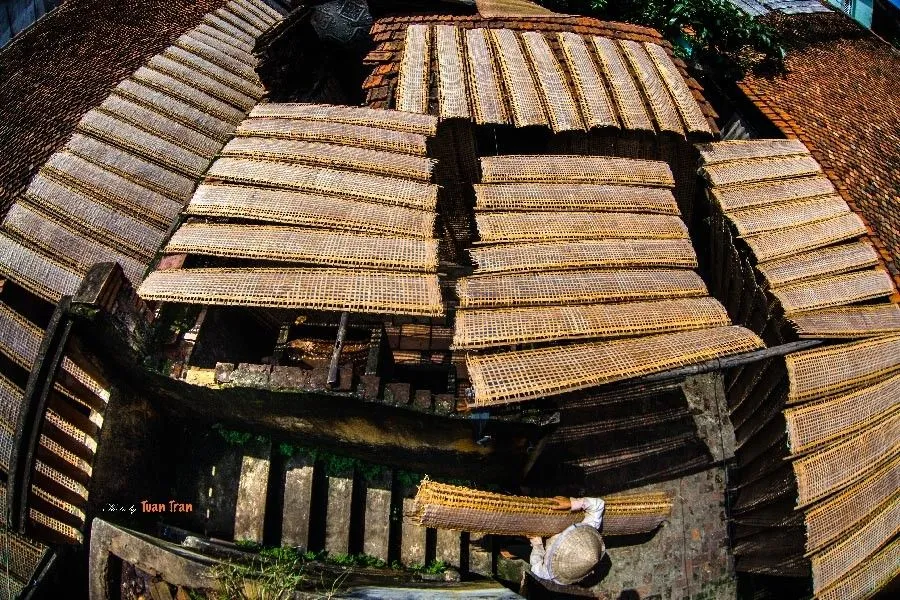
Unlike villages in the Red River Delta, Tho Ha residents do not have rice fields but mainly live on handicrafts and small businesses. Before 1960, the village was famous for pottery making. Later, people switched to making rice paper and rice vermicelli. Coming to Tho Ha, you will easily encounter people diligently working in a peaceful setting. Tho Ha village is famous for its ancient architecture from houses, village gates to ancient wells all made of baked bricks and terracotta embossed without glaze. In particular, it also has Tho Ha pagoda and communal house – a masterpiece of traditional Vietnamese architecture.
Nom Village (Hung Yen): Imprint of Pho Hien
Nom Village is the only ancient village of Pho Hien that still exists today, carrying the majestic space and nostalgic appearance characteristic of the North. This 200-year-old village is located in Hung Yen, an ideal destination for those who want to learn about the history and culture of the ancient Pho Hien land.
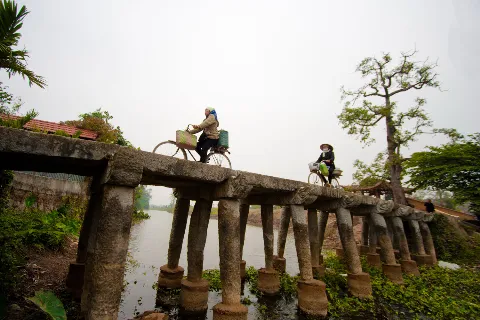
Stepping through the centuries-old village gate, a fairly intact rural space opens up before your eyes. Located in the center of the village is a large and clear lake. Along the lake are ancient houses or ancestral halls of large families, exuding a unique cultural feature in the ancient capital of Pho Hien. Opposite the village gate, across the lake, is a beautiful architectural complex including the village’s communal house, ancient well, and ancient banyan tree.
The traditional villages of Northern Vietnam are not only attractive tourist destinations but also living museums of history, culture, and architecture. Take the time to explore these villages to feel the timeless beauty and gain a deeper understanding of Vietnamese cultural identity.